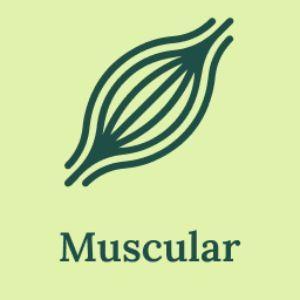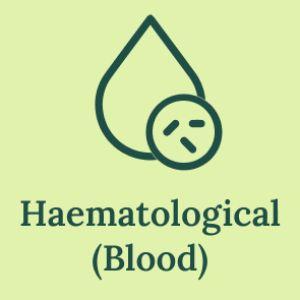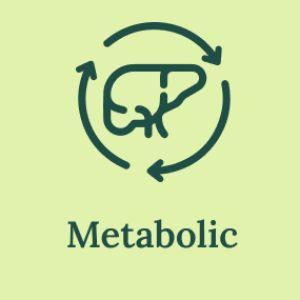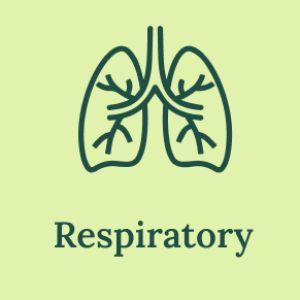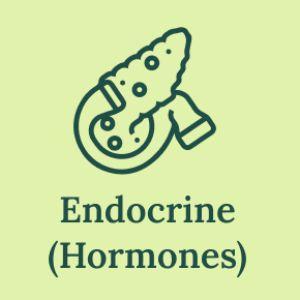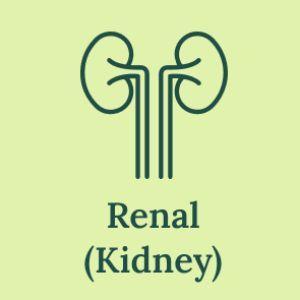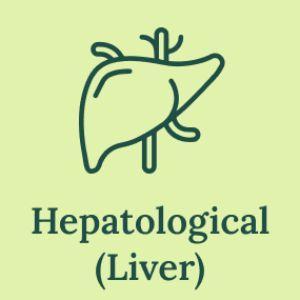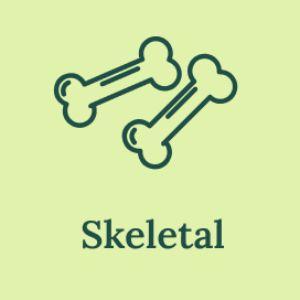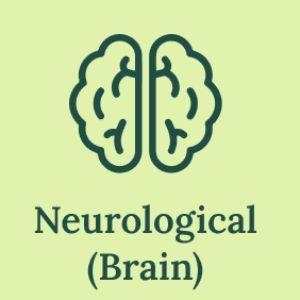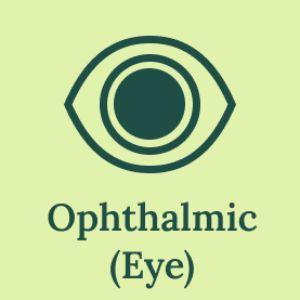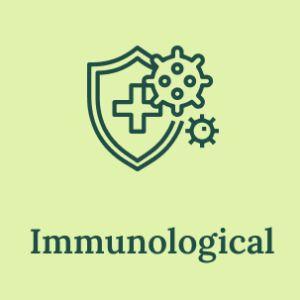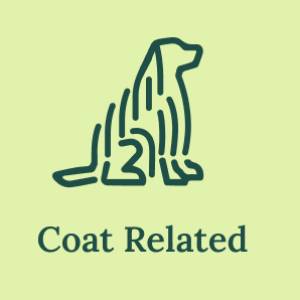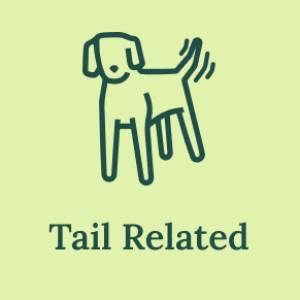Beyond love,
knowledge enables
you to care for
them better
Beyond love,
knowledge enables
you to care for
them better
Duchene Muscular dystrophy is an inherited muscle disease, characterized by stiff gait, weakening of muscles, difficulty swallowing, progressive generalized weakness, plantigrade stance, and muscle atrophy.
Muscular hypertrophy, also called as Bully Whippet – Whippet Double Muscling, is an inherited muscular disorder characterized by increased muscle mass with broad chest, strongly developed leg and neck musculature
Congenital Myasthenic is an inherited muscle disease, characterized by severe generalized skeletal muscle weakness and fatigue, usually induced by exercise. Puppies also show inability to close the eyes, excessive drooling and difficulty breathing.
Myotonia is an inherited muscle disease, characterized by muscle stiffness and weakness. Affected dogs exhibit a stiff gait, experience trouble when rising, suffer with swollen tongues and may have difficulty swallowing.
Myopathy is an inherited muscle disease, characterized by severe, progressive muscle atrophy in puppies. Symptoms include general weakness, exercise intolerance, muscle pain, limited joint movement and ventroflexion of head and neck.
Myotubular Myopathy manifests with severe, progressive muscle atrophy in puppies. Symptoms include general weakness, exercise intolerance, muscle pain, limited joint movement and ventroflexion of head and neck.
Gall bladder Mucocele results when there is a blockage within the fundus of gallbladder resulting in episodic symptoms of lack of appetite, vomiting and abdominal pain. Severe cases show gall bladder extension, necrosis of gallbladder and peritonitis.
Intestinal cobalamin malabsorption is an inherited disease affecting bone marrow and gastric system. It is characterized by failure to thrive, neutropenia, decreased serum cobalamin, non- regenerative anemia, methylmalonic aciduria, and homocysteinemia.
Hemophilia is an inherited hematological disorder characterized by uncontrolled bleeding due to absence of clotting factor IX in blood and affected dogs suffer from spontaneous and prolonged bleeding.
Factor VII deficiency, is an inherited blood clotting disorder, characterized by a deficiency or reduced activity of clotting factor VII protein with dogs exhibiting uncontrolled bleeding episodes with varying age of onset.
Scott Syndrome is an inherited blood disease, characterized by excessive bleeding due to clotting factor deficiency. The symptoms include spontaneous, non-traumatic bleeding, nosebleeds, bruising, bleeding in joints, and excessive bleeding during teething.
Hypocatalasia is an inherited disease, due to deficiency of catalase enzyme activity in red blood cells. It results in progressive gangrene in the oral cavity with oral ulcers, difficulty in eating and frequent infections.
Bleeding disorder due to P2RY12 is characterized by excessive bleeding due to defective platelet function. Although spontaneous bleeding is uncommon, excessive bleeding following a trauma or surgery is reported in affected dogs.
Pyruvate kinase deficiency of erythrocyte is an inherited disease, characterized by decreased number of red blood cells leading to inadequate supply of oxygen. Dog shows fatigue, lethargy, recurrent gallstones, jaundice and pale skin.
Polycythemia is an inherited blood disorder characterized by abnormal increase in count of red blood cells (RBC). The affected dog shows enlarged liver and spleen, fatigue, dizziness, shortness of breath, vision problems, night sweats and flushed face.
Prekallikrein deficiency is a rare inherited disorder characterized by prolonged clotting time due to deficient Prekallikrein protein. Affected dogs may show presence of blood in the urine, gastrointestinal hemorrhage and excessive postoperative bleeding can occur.
Thrombasthenia is an inherited blood disorder characterized by excessive bleeding due to defective platelet aggregation. Symptoms include hemorrhage, skin bruising, gum and nose bleeding, blood in urine and faeces or black faeces.
Thrombocytopaenia is charecterized by excessive bleeding due to low platelet count. Affected dogs may show fever, lethargy, loss of appetite, weakness, heart murmur, bleeding of gums, skin bruises and blood in urine.
Thrombopathia is characterized by excessive bleeding with abnormal platelets. The decreased platelet function can cause dogs to bleed excessively during an injury or surgery. Other symptoms are gingival bleeding and hematomas.
Trapped Neutrophil Syndrome is an inherited hematological disease where neutrophils are affected and ability to fight illnesses decreases. Along with lack of immunity, slow weight gain and slow growth, dogs have depression, swollen joints and failure to thrive.
Von Willebrand disease III is an inherited bleeding disorder characterized by total or near-total absence of Willebrand factor (VWF) in the plasma, leading to a prolonged and excessive bleeding after injury, bleeding gums, blood in stool and skin bruising.
Von Willebrand disease III is an inherited bleeding disorder characterized by total or near-total absence of Willebrand factor (VWF) in the plasma, leading to a prolonged and excessive bleeding after injury, bleeding gums, blood in stool and skin bruising.
Von Willebrand disease III is an inherited bleeding disorder characterized by total or near-total absence of Willebrand factor (VWF) in the plasma, leading to a prolonged and excessive bleeding after injury, bleeding gums, blood in stool and skin bruising.
Von Willebrand disease III is an inherited bleeding disorder characterized by total or near-total absence of Willebrand factor (VWF) in the plasma, leading to a prolonged and excessive bleeding after injury, bleeding gums, blood in stool and skin bruising.
Cystinuria Type I-A is an inherited metabolic disorder that affects kidney with increased urinary calculi formation, blockage of the urinary tract, inflammation of the bladder, blood in the urine, renal colic and kidney failure
Cystinuria Type II-A is an inherited metabolic disorder that affects kidney with increased urinary calculi formation, blockage of the urinary tract, inflammation of the bladder, blood in the urine, renal colic and kidney failure
Cystinuria Type II-A is an inherited metabolic disorder that affects kidney with increased urinary calculi formation, blockage of the urinary tract, inflammation of the bladder, blood in the urine, renal colic and kidney failure
Cystinuria Type I-A is an inherited metabolic disorder that affects kidney with increased urinary calculi formation, blockage of the urinary tract, inflammation of the bladder, blood in the urine, renal colic and kidney failure
Glycogen storage diseases (GSD) is a severe inherited disorder with defective carbohydrate metabolism, leading to accumulation of glycogen in tissues, resulting in vomiting, progressive muscular weakness, heart disease and myocardial hypertrophy.
Glycogen Storage Disease-1a is a metabolic disorder characterized by inability to convert glucose-6- phosphate to glucose, resulting in weakness, chronic low blood sugar, lethargy, enlarged liver and anorexia with varied severity.
Gangliosidosis is an inherited metabolic disease due to defective carbohydrate metabolism. The symptoms include vision loss, difficulties walking, loss of balance, head tremors, lethargy and weight loss.
Glycogen Storage Disease-11 is an early onset, inherited metabolic disease with, characterized by partial or total vision loss, behavior changes, abnormal gait, and seizures.
Glycogen storage disease IIIa is an inherited disease, characterized by defective glycogen metabolism. Affected dog may not grow fast enough, and may have heat intolerance, bruising, hypoglycemia, enlarged liver, swollen belly and weak muscle tone.
L-2-Hydroxyglutaric Academia is an inherited neurological and metabolic disease, characterized by early onset neurological traits such as psychomotor impairment, seizures, ataxia, dementia, and tremors.
Mucopolysaccharidosis VII is an inherited disease, characterized by skeletal abnormalities, retarded development, excessively lax joints, broad chests, low set ears, short muzzle, broad face, crooked legs with difficulty standing and walking difficulties.
Mucopolysaccharidosis IIIa is an inherited disease, characterized by lysosomal accumulation and urinary excretion of heparan sulfate. The symptoms include growth retardation, skeletal deformities, corneal cloudiness, facial dysmorphia and neurological problems.
Mucopolysaccharidosis VII is an inherited disease, characterized by skeletal abnormalities, retarded development, excessively lax joints, broad chests, low set ears, short muzzle, broad face, crooked legs with difficulty standing and walking difficulties.
Pyruvate Dehydrogenase Deficiency leads to failure of the expelling waste products from the body efficiently. Affected dogs may show symptoms of nausea, vomiting, severe breathing problems, and an abnormal heartbeat.
Glycogen storage disease VII is an inherited disease, characterized by defective glycogen metabolism. Affected dog may not grow fast enough, and may have heat intolerance, bruising, hypoglycemia, enlarged liver, swollen belly and weak muscle tone.
Primary Ciliary Dyskinesia results in early onset progressively respiratory distress with nasal discharge, chronic sneezing, coughing, exercise intolerance, respiratory distress, cyanosis and infertility in male. Acute bronchopneumonia may occur.
Hypothyroidism or deficiency in thyroid hormone, has early onset with varied clinical including dwarfism, mental retardation, skeletal development abnormalities, Lethargy, protruding eyes, constipation, tremors and spasticity.
PMDS is a type of XY disorder of sexual development (XY DSD), characterized by the presence of Müllerian duct derivatives in otherwise normal males with 50% of affected dogs are unilaterally or bilaterally cryptorchid
Dwarfism, Pituitary symptoms include body being longer than normal, legs shorter, bulging eyes, swollen abdomen, tongue sticking out and High-pitched puppy bark with respiratory and coordination issues.
Renal Cystadenocarcinoma and Nodular Dermatofibrosis is a genetic disorder, which is inherited, that can lead to uterine, kidney, and dermal cancer with onset usually at around 6yrs
Polycystic Kidney Disease is an inherited kidney disease, with high susceptibility for formation of cysts in kidneys. Symptoms include enlarged kidneys, thirst, frequent urination, lethargy, lack of appetite, weight loss, vomiting and high blood pressure.
Urolithiasis is an inherited renal condition, with high susceptibility for formation of bladder stones (calculi). Symptoms include frequent urination, blood in the urine, lethargy, depression, reduced appetite, pain, vomiting and difficulty in urination.
Nephritis is a renal defect caused by defective collagen. Affected males exhibit proteinuria and develop rapidly progressive renal failure, which is usually fatal. Carrier females rarely exhibit mild symptoms.
Ichthyosis is a rare congenital hereditary disorder of skin, characterized by hyperkeratoses of different severity levels characterized by dry, wrinkled, thickened skin especially in the region of the eyes and nose.
Icthyosis is an inherited disease, characterized by abnormal lesions on skin. The symptoms include scaly skin, thickening of the skin and footpads, thick, greasy flakes/scales and dandruff. Severity ranges from moderate to severe
Icthyosis is an inherited disease, characterized by abnormal lesions on skin. The symptoms include scaly skin, thickening of the skin and footpads, thick, greasy flakes/scales and dandruff. Severity ranges from moderate to severe.
Ectodermal Dysplasia is an inherited skin condition, with lack of hair on the forehead and back near the tail. Symptoms include abnormal nails, decreased skin color, large forehead, low nasal bridge, sparse hair and learning disabilities and frequent eye infections.
Hyperkeratosis, Palmoplantar is an inherited skin disease, characterized by early onset, abnormal scaling of skin, horny protrusions on the rims of the footpads, hard pad surface, cracks, hard nails resulting in discomfort while walking.
Epidermolytic Hyperkeratosis is an inherited skin disorder, characterized by abnormal scaling of skin with display of sloughing and blistering of the skin with rubbing. The footpads, claws, teeth and hair of affected dogs are typically normal
Epidermolysis Bullosa, Dystrophic is a genetic disorder characterized by extreme fragility of the skin and mucosa, leading to unremitting blisters and erosion, bleeding in mouth and upper digestive system and defective wound healing.
Ichthyosis is a rare congenital hereditary disorder of skin, characterized by hyperkeratoses of different severity levels characterized by dry, wrinkled, thickened skin especially in the region of the eyes and nose.
Menkes disease is an inherited, fatal, neurodegenerative disorder of copper deficiency with accumulation of copper and characterized by liver and brain degeneration, connective tissue abnormalities, coarse hair and failure to thrive.
Wilson disease, an inherited genetic disorder associated with copper accumulation resulting in hepatic cirrhosis and neuronal degeneration with fatigue, lack of appetite, jaundice, speech, poor coordination and muscle stiffness.
Chondrodysplais is an inherited skeletal disorder associated with abnormalities in the development of cartilage tissues and symptoms include small stature, disproportionately short arms and legs, shortness of fingers and toes, broad short hands and feet.
Craniomandibular osteopathy is an early onset skeletal genetic disease, characterized by abnormalities in jaws of dogs. The symptoms are Loss of appetite, bulging eyes, Jaw swelling, difficulty opening mouth and difficulty picking up food with mouth.
Osteogenesis Imperfecta is an inherited skeletal disorder, characterized by fragile bones. The symptoms include spontaneous fracturing of the bones and teeth, loose joints, difficulty walking, pain, osteopenia and stunted growth.
Musladin-lueke syndrome is a congenital genetic defect characterized by defects in skeleton, heart, skin, and muscle. Dogs exhibit short outer toes, high set creased ears, flat skull, slant narrowed eyes, stiff gait, and seizures Severity is mild, moderate to severe.
Osteogenesis imperfecta is an inherited disease, characterized by fragile bones (soft bones). Affected dogs show spontaneous and frequent fractures of bone and teeth, stunned growth, difficulty in walking, pain and hearing loss.
Osteogenesis imperfecta is an inherited disease, characterized by fragile bones (soft bones). Affected dogs show spontaneous and frequent fractures of bone and teeth, stunned growth, difficulty in walking, pain and hearing loss.
This is an inherited disease, characterized by dwarfism. Affecetd dogs have shoetened limbs but with normal body length and width. Radiological findings typically include shortened and sometimes slightly curved long bones with front legs more affected than hind.
Brachycephalic dogs tend to have extremely shortened snouts that make them almost appear flat- faced and dogs with brachycephaly have a history of loud snoring and noisy breathing.
Vitamin D-deficency, rickets type II is an inherited disorder with end-organ resistance to the active Vitamin D hormone. The disorder is characterized by hypocalcemia, secondary hyperparathyroidism, hypomineralization of bones rickets and in some cases alopecia.
Amelogenesis Imperfecta is a common non-syndromic genetic condition caused by malfunction of enamel proteins, resulting in enamel hypoplasia or thinning, small and pointed teeth, rough surface with brown color, and greater gaps between teeth.
Dental hypomineralization, also known as Raine Syndrome is an inherited dental disorder characterized by extensive wear of teeth, cracking of tooth enamel, brownish spots or brownish discoloration of teeth or pulpitis
Cerebellar ataxia causes cerebellar shrinkage, leading to loss of balance and uncoordinated movements along with tremors, dizziness, hearing loss, weakening of limbs, head tilting, nystagmus, nausea and loss of appetite.
Benign Familial Juvenile Epilepsy or focal epilepsy is a genetic disorder, characterized by the recurrent seizures in dogs with facial twitches, rhythmic jerks, hypersalivation, restlessness or behavioral changes with varying degree of severity.
Neuronal Ceroid Lipofuscinosis is a severe neurological disorder with late-onset and slowly progressive cognitive and motor degeneration resulting in impaired vision, seizures, aggressive behavior, and increased sensitivity to loud noises.
Ataxia is characterized by uncoordinated movements, loss of coordination and generalized ataxic gait starting at 4 weeks of age with seizures, showed pacing and circling and developed central blindness in affected dogs
Achromatopsia is an inherited eye disorder, characterized by cone photoreceptor dysfunction, leading to severely reduced or complete vision loss during daylight hours, photophobia, nystagamus and total colour-blindness.
Cerebellar hypoplasia, is non-progressive form of neurological condition resulting in inadequate development of cerebellum with poor motor skills, clumsiness, frequent falling, wide stance, tremors and vision problems.
Cerebellar abiotrophy Also known as neonatal cerebellar cortical degeneration (NCCD) is a neurodegenerative disorder affecting the cerebellum. Inheritance pattern is unclear
Cerebellar Ataxia is an inherited neurological disease, characterized by degeneration of cerebellum. The symptoms include ataxia, seizures, stumbling, staggering, tremors, hopping, falling and growth impairment.
Cerebellar Cortical Degeneration is an inherited neurological condition, disrupting synaptic transmission and neuronal excitability with symptoms of dysmetric ataxia, marked truncal sway, tremors with rapid progression of the disease after onset.
The neuronal ceroid lipofuscinoses (NCLs) are a group of lysosomal storage diseases characterized by intraneuronal accumulation of fluorescent granules and early neuronal death.
Degenerative myelopathy, also known as chronic degenerative radiculomyelopathy, is an inherited disease affecting the spinal cord, resulting in slowly progressive hind limb weakness and paralysis.
GM1 gangliosidosis is a lysosomal storage disease caused by beta galactosidase deficiency and characterized by progressive neurological deterioration including weight loss, ataxia, abnormal gait, tremors, strabismus and positional nystagmus.
Neuronal Ceroid Lipofuscinosis 12 is an inherited disease, characterized by degeneration of Central Nervous System with affected dogs showing loss of vision, behavioral changes, cerebellar ataxia, tremors, and decline of cognitive and motor functions.
Neuronal Ceroid Lipofuscinosis 6 is an inherited disease, characterized by degeneration of Central Nervous System with affected dogs showing loss of vision, behavioral changes, cerebellar ataxia, tremors, and decline of cognitive and motor functions.
Spongy Degenerative Cerebellar Ataxia, is an early onset inherited neurodegenerative disorder characterized by ataxiac gait, lack of co-ordination, poor balance, seizures, accompanied by stumbling, staggering, tremors, hopping, and falling.
Krabbe Disease is an inherited neurological disorder with clinical signs of cerebellar ataxia/intention tremor, postural reaction deficit, stiffness, spastic paresis/paralysis, hearing loss, vision loss, motor and sensory neuropathy.
Polyneuropathy is an inherited neurological disease, with symptoms including change in gait, loss of bark, limb weakness, tremors, lack of coordination, difficulty in swallowing and atrophy.
Polyneuropathy is an inherited, early onset neurological disease, characterized by dilated myelin sheaths of nerve cells. Symptoms include visual problems, laryngeal paralysis, regurgitation, gait abnormalities, ataxia and visual defects.
Necrolapsy is an inherited neurological disorder, characterized by abnormal nervous system. Affected dogs may exhibit sudden collapse and loss of movement with recovery in some time, excessive daytime sleepiness and sleep paralysis
Neuronal Ceroid Lipofuscinosis, 1 is an inherited neurological disorder, characterized by progressive degeneration of central nervous system. Common symptoms include partial or total vision loss, behavior changes, abnormal gait, and seizures
Neuronal Ceroid Lipofuscinosis, 10 is an inherited neurological disorder, characterized by progressive degeneration of central nervous system. Common symptoms include partial or total vision loss, behavior changes, abnormal gait, and seizures.
Neuronal Ceroid Lipofuscinosis, 8 is an inherited neurological disorder, characterized by progressive degeneration of central nervous system. Common symptoms include partial or total vision loss, behavior changes, abnormal gait, and seizures.
Neonatal encephalopathy with seizures is a serious inherited progressive brain disorder, characterized by weakness, mobility issues, and seizures in affected pups with uncoordinated movements and mental dullness.
Neuroaxonal dystrophy is a neurological genetic disorder, characterized by progressive degeneration of the nerve cells. Symptoms include high stepping gait, poor coordination, stumbling, head tremors, incontinence, Vit E deficiency and secondary pneumonia.
Degenerative Polyneuropathy results in slow wasting of muscles, exercise intolerance, gait abnormalities, ambulatory paraparesis, and difficulty in breathing due to involvement of the larynx and laryngeal folds in the throat.
Spinocerebellar Ataxia is an inherited disease characterized by abnormal coordination. The symptoms include ataxia, uncoordinated walk with stilted “toy soldier” leg movements, involuntary eye movement and growth impairment.
Tremors X-linked is an inherited disorder characterized loss of coordination between brain and body. The male puppies have difficulties standing, eating and moving and show uncoordinated gait, leading to scuffing or dragging of the paws.
Progressive retinal atrophy is an inherited condition primarily affecting the dog’s vision. Starting with degeneration of rod photoreceptors, leading to loss of night-vision, the disease eventually leads to complete blindness.
Multifocal Retinopathy is characterized by fluid accumulation under the detached retina resulting in gray, tan, orange or pink “blisters” in the eye. As, the progression is slow, lesions appear to heal with little or no vision loss due to this condition.
Multifocal Retinopathy is characterized by fluid accumulation under the detached retina resulting in gray, tan, orange or pink “blisters” in the eye. As, the progression is slow, lesions appear to heal with little or no vision loss due to this condition.
Cone Rod Dystrophy is an inherited eye disorder affecting the rod and cone photoreceptors resulting in visual acuity followed by severe loss of central and color vision that often progresses to blindness due to retinal degeneration.
Cone Rod Dystrophy is an inherited eye disorder affecting the rod and cone photoreceptors resulting in visual acuity followed by severe loss of central and color vision that often progresses to blindness due to retinal degeneration.
Congenital Stationary Night Blindness is a slow, progressive, retinal degenerative disorder which is characterized by loss of night vision, progressing to low light and also possibly day vision. Onset in early.
Canine multifocal retinopathy is characterized by multiple areas of retinal degeneration along with generalized retinal degeneration and affected dogs may exhibit acquired post-inflammatory changes, and fundus changes
Cone Rod Dystrophy is an inherited eye disorder affecting the rod and cone photoreceptors resulting in visual acuity followed by severe loss of central and color vision that often progresses to blindness due to retinal degeneration.
Rod cone dysplasia 3 is characterized by progressive retina atrophy including changes in reflectivity and appearance of a structure behind the retina resulting in loss of peripheral vision and night vision.
Primary Open Angle Glaucoma is a genetic condition where microfibrils of eye are affected leading to increased pressure in the eye. This leads to slow loss of vision with eye pain, watery discharge, lethargy, loss of appetite, with swelling and bulging of the eyeball.
Progressive retinal atrophy is an inherited disease, characterized by late onset vision loss. The first sign is loss of vision in dim light that worsens progressively and culminates in total blindness. The symptoms include night blindness.
Progressive retinal atrophy is an inherited disease, characterized by late onset vision loss. The first sign is loss of vision in dim light that worsens progressively and culminates in total blindness. The symptoms include night blindness.
Achromatopsia 2 is an inherited eye disease, characterized by early onset loss of cone photo-receptor function resulting in day blindness, total color blindness, decreased central visual acuity.
Achromatopsia, AMAL type is an inherited eye disease, characterized by the loss of cone photo- receptor function resulting in day blindness, total color blindness, decreased central visual acuity. Onset varies from early to late in different breeds.
Progressive Retinal Atrophy is an inherited, late onset, eye disorder, characterized by vision loss. The first sign is loss of vision in dim light that worsens progressively and culminates in blindness. The symptoms include night blindness.
Macular Corneal Dystrophy is an inherited eye disease, characterized severe visual impairment in affected dogs. The symptoms include watery eyes, sensitivity to light glare, pain in the eye and corneal erosion.
Lens luxation is an inherited disease, characterized by breakdown of the lens zonules in the eye of the puppy. Symptoms include pain in the eye, increased tears, inflammation, cloudiness or redness of the eye.
Characterized by vision loss, Glaucoma is a late onset disease caused by increased intra ocular pressure. The symptoms include increase blurred vision, blue color Sclera, cloudy cornea, red eye, squinting and weak blink response.
Degenerative Polyneuropathy results in slow wasting of muscles, exercise intolerance, gait abnormalities, ambulatory paraparesis, and difficulty in breathing due to involvement of the larynx and laryngeal folds in the throat.
Characterized by vision loss, the disease has late onset and has been described in Basenji breeds. Starting with loss of vision in dim light, the condition has slow progression and culminates in total blindness.
Rod Cone Dysplasia is characterized by early onset loss of vision loss, which becomes more severe over time. These disorders affect the retina causing night blindness, loss of visual acuity, constriction of visual fields and complete blindness.
C3 deficiency results in recurrent bacterial infections such as pneumonia, urinary tract infections and uterine infections due to compromised immunity with increased risk for muscle disease and glomerulonephropathy, a kidney disease.
Canine leukocyte adhesion deficiency is a primary immunodeficiency disorder characterized by recurrent bacterial infections in the presence of marked leukocytosis, impaired wound healing, fever, gingivitis, lameness, and enlarged lymph nodes.
Canine leukocyte adhesion deficiency is a primary immunodeficiency disorder characterized by recurrent bacterial infections in the presence of marked leukocytosis, impaired wound healing, fever, gingivitis, lameness, and enlarged lymph nodes.
Severe combined immunodeficiency autosomal, T-cell negative, B-cell negative, NK-positive is an immunological defect characterized by recurrent infections (Oral and respiratory), low immunity, chronic diarrhea and failure to thrive.
Severe combined immunodeficiency autosomal, is an immunological defect characterized by recurrent infections (Oral and respiratory), low immunity, chronic diarrhea, reduced levels of immunoglobulins and lymphocytes and failure to thrive.
Severe combined immunodeficiency X-linked is an inherited disorder characterized by inability to fight recurrent systemic or localized infections of the eye, ear or respiratory system showing symptoms of chronic diarrhea, serious infections and failure to thrive.
| Types | Common Breeds |
|---|---|
| Classic Brown Coat | Australian Shepherd, German Shepherd, Leonberger, Miniature American Shepherd |
| Uniform Black Coat | German Shepherd |
| Alopecia or Color Dilution | American Staffordshire Terrier, Beagle, Doberman, Pinscher, German Pinscher, Large Munsterlander, Miniature Pinnscher, Rhodesian Ridgeback |
| Black, brown and grey melanistic muzzle mask | Multiple Breeds |
| Grizzle coat, mixed blended hair with no discernible pattern | Saluki and Afghan Hound |
| Dominant Black Coat | Domesticated wolf breeds like German Shepard and Husky |
| Harlequin patchy pattern coat | Great Dane |
| Curly Coat | Irish Water Spaniel, Standard Poodle |
| Improper Coat | Portuguese water dog |
| Variable degree white spotting to full white coat | German Shepherd |
| Types | Common Breeds |
|---|---|
| Long Hair Phenotype | Eurasier Afghan Hound, Eurasier Akita, Samoyed Afghan Hound, Border Collie, Cocker Spaniel, Collie, Corgi, Dachshund, German Shepherd, Golden Retriever, Pomeranian, Samoyed |
| Types | Common Breeds |
|---|---|
| Short Tails (Bob Tails) | Corgi |
 Muscular
Muscular Gastrointestinal
Gastrointestinal Haematological
Haematological  Metabolic
Metabolic Respiratory
Respiratory Endocrine
Endocrine  Renal
Renal  Dermatological
Dermatological Hepatological
Hepatological Skeletal
Skeletal  Dental and Oral
Dental and Oral Neurological
Neurological  Ophthalmic
Ophthalmic Immunological
Immunological  Coat Related
Coat Related| Types | Common Breeds |
|---|---|
| Classic Brown Coat | Australian Shepherd, German Shepherd, Leonberger, Miniature American Shepherd |
| Uniform Black Coat | German Shepherd |
| Alopecia or Color Dilution | American Staffordshire Terrier, Beagle, Doberman, Pinscher, German Pinscher, Large Munsterlander, Miniature Pinnscher, Rhodesian Ridgeback |
| Black, brown and grey melanistic muzzle mask | Multiple Breeds |
| Grizzle coat, mixed blended hair with no discernible pattern | Saluki and Afghan Hound |
| Dominant Black Coat | Domesticated wolf breeds like German Shepard and Husky |
| Harlequin patchy pattern coat | Great Dane |
| Curly Coat | Irish Water Spaniel, Standard Poodle |
| Improper Coat | Portuguese water dog |
| Variable degree white spotting to full white coat | German Shepherd |
| Types | Common Breeds |
|---|---|
| Classic Brown Coat | Australian Shepherd, German Shepherd, Leonberger, Miniature American Shepherd |
| Uniform Black Coat | German Shepherd |
| Alopecia or Color Dilution | American Staffordshire Terrier, Beagle, Doberman, Pinscher, German Pinscher, Large Munsterlander, Miniature Pinnscher, Rhodesian Ridgeback |
| Black, brown and grey melanistic muzzle mask | Multiple Breeds |
| Grizzle coat, mixed blended hair with no discernible pattern | Saluki and Afghan Hound |
| Dominant Black Coat | Domesticated wolf breeds like German Shepard and Husky |
| Harlequin patchy pattern coat | Great Dane |
| Curly Coat | Irish Water Spaniel, Standard Poodle |
| Improper Coat | Portuguese water dog |
| Variable degree white spotting to full white coat | German Shepherd |
 Tail Related
Tail Related| Types | Common Breeds |
|---|---|
| Short Tails (Bob Tails) | Corgi |
| Types | Common Breeds |
|---|---|
| Short Tails (Bob Tails) | Corgi |
 Hair Related
Hair Related| Types | Common Breeds |
|---|---|
| Long Hair Phenotype | Eurasier Afghan Hound, Eurasier Akita, Samoyed Afghan Hound, Border Collie, Cocker Spaniel, Collie, Corgi, Dachshund, German Shepherd, Golden Retriever, Pomeranian, Samoyed |
| Types | Common Breeds |
|---|---|
| Long Hair Phenotype | Eurasier Afghan Hound, Eurasier Akita, Samoyed Afghan Hound, Border Collie, Cocker Spaniel, Collie, Corgi, Dachshund, German Shepherd, Golden Retriever, Pomeranian, Samoyed |
 Coat Related
Coat Related| Types | Common Breeds |
|---|---|
| Classic Brown Coat | Australian Shepherd, German Shepherd, Leonberger, Miniature American Shepherd |
| Uniform Black Coat | German Shepherd |
| Alopecia or Color Dilution | American Staffordshire Terrier, Beagle, Doberman, Pinscher, German Pinscher, Large Munsterlander, Miniature Pinnscher, Rhodesian Ridgeback |
| Black, brown and grey melanistic muzzle mask | Multiple Breeds |
| Grizzle coat, mixed blended hair with no discernible pattern | Saluki and Afghan Hound |
| Dominant Black Coat | Domesticated wolf breeds like German Shepard and Husky |
| Harlequin patchy pattern coat | Great Dane |
| Curly Coat | Irish Water Spaniel, Standard Poodle |
| Improper Coat | Portuguese water dog |
| Variable degree white spotting to full white coat | German Shepherd |
| Types | Common Breeds |
|---|---|
| Classic Brown Coat | Australian Shepherd, German Shepherd, Leonberger, Miniature American Shepherd |
| Uniform Black Coat | German Shepherd |
| Alopecia or Color Dilution | American Staffordshire Terrier, Beagle, Doberman, Pinscher, German Pinscher, Large Munsterlander, Miniature Pinnscher, Rhodesian Ridgeback |
| Black, brown and grey melanistic muzzle mask | Multiple Breeds |
| Grizzle coat, mixed blended hair with no discernible pattern | Saluki and Afghan Hound |
| Dominant Black Coat | Domesticated wolf breeds like German Shepard and Husky |
| Harlequin patchy pattern coat | Great Dane |
| Curly Coat | Irish Water Spaniel, Standard Poodle |
| Improper Coat | Portuguese water dog |
| Variable degree white spotting to full white coat | German Shepherd |
 Tail Related
Tail Related| Types | Common Breeds |
|---|---|
| Short Tails (Bob Tails) | Corgi |
| Types | Common Breeds |
|---|---|
| Short Tails (Bob Tails) | Corgi |
 Hair Related
Hair Related| Types | Common Breeds |
|---|---|
| Long Hair Phenotype | Eurasier Afghan Hound, Eurasier Akita, Samoyed Afghan Hound, Border Collie, Cocker Spaniel, Collie, Corgi, Dachshund, German Shepherd, Golden Retriever, Pomeranian, Samoyed |
| Types | Common Breeds |
|---|---|
| Long Hair Phenotype | Eurasier Afghan Hound, Eurasier Akita, Samoyed Afghan Hound, Border Collie, Cocker Spaniel, Collie, Corgi, Dachshund, German Shepherd, Golden Retriever, Pomeranian, Samoyed |
FAQs
We test for over 130 genetic health risks and 20 physical traits. Explore them all here.
Urban Animal values both privacy and scientific openness. Your information and your pet’s information will never be shared with anyone without your explicit permission. We do work with other scientists and researchers to use aggregated, non-identifying information to drive scientific discoveries. If you do not want your dog to be a part of that research you can reach out to us here and inform us
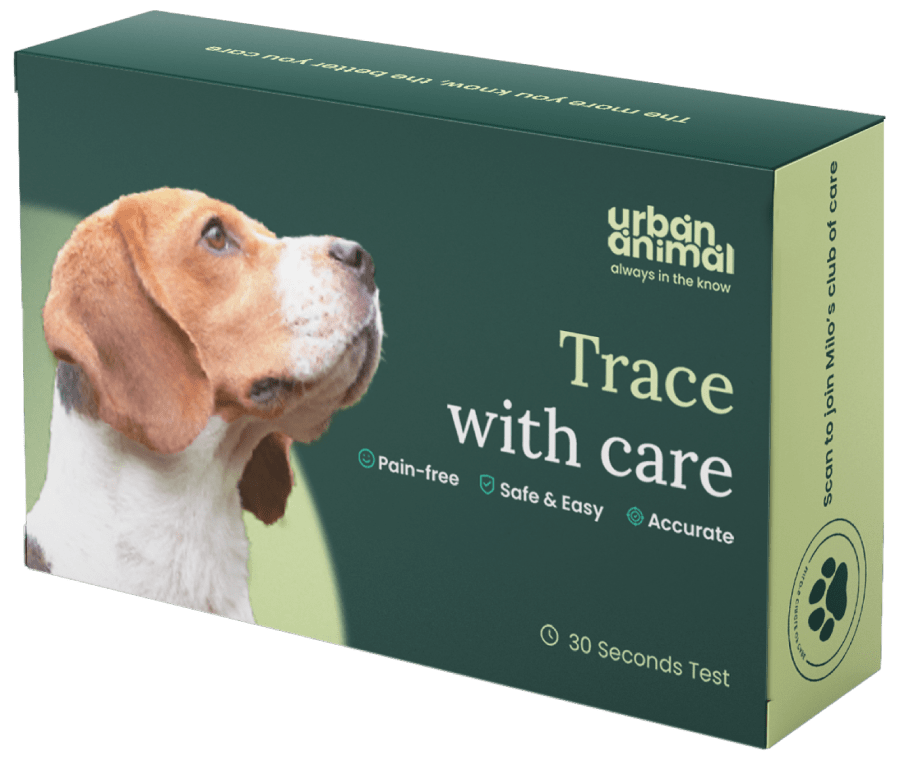
Your first step towards
proactive care
your pet!


